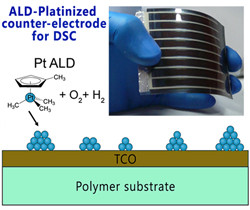Thin films with perfect atomic layers
Photovoltaics (PVs) are expected to play a significant role in shaping Europe's energy market over time as soon as energy conversion efficiencies are enhanced. Tailoring the properties of thin films — which are found in most solar cells — is leading to more efficient PV systems. Major challenges are associated with photon absorption, electron–hole recombination and charge transport. Atomic layer deposition (ALD) is a vapour-phase deposition technique that can be applied to tailor device interface properties. The process possesses a unique advantage in that it offers the deposition of highly uniform and conformal nanolayers. However, its full potential for PV cell manufacturing has not been exploited. With EU funding of the project 'Atomic layer deposition of metal oxides for photovoltaic solar cells' (ALD4PV)(opens in new window), scientists explored the use of ALD-synthesised metal-oxide films for different types of solar cells. Unlike conventional deposition techniques, ALD is able to process passivation layers for new concepts of solar cells — 3D structured devices — with higher efficiencies. Scientists exploited the passivation properties of aluminium oxide (Al2O3) films and Al2O3-based stacks, ultimately obtaining more efficient solar cells. Furthermore, ALD4PV proposed a novel use of ALD-synthesised platinised counter electrodes to obtain flexible dye-sensitised solar cells (DSCs). Scientists explored the possibility of also using this process to produce other parts of the DSCs such as the barrier and compact layers by using different metal oxides. Another focus of the project was to use alternative precursors to dope ALD-synthesised zinc oxide to produce highly conductive, transparent oxides. Various novel doping precursors were studied for silicon and thin-film solar cells. After project conclusion, ALD4PV organised a workshop to highlight the ALD potential for various solar cell technologies. Project findings were disseminated through the project website and publications.







